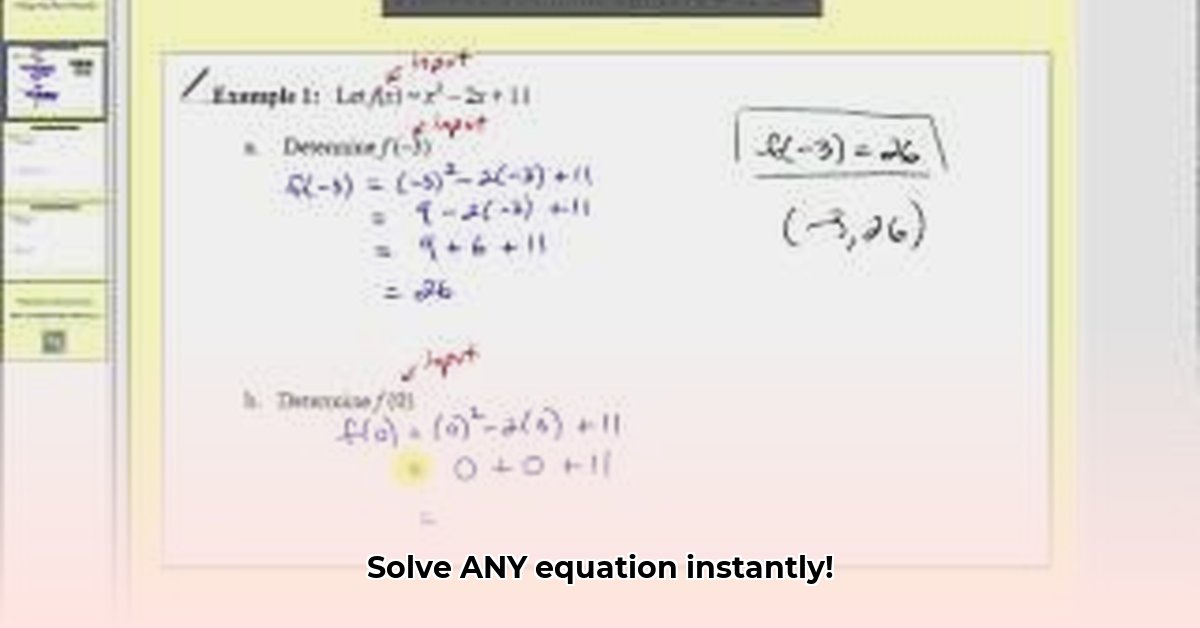
Understanding Piecewise Functions: A Building Block Approach
Piecewise functions, at first glance, might resemble a complex puzzle. However, by understanding their fundamental structure, solving them becomes surprisingly straightforward. Think of a piecewise function as a collection of separate functions, each defined over a specific interval of the input values (the domain). Each "piece" is a standard function (like linear, quadratic, etc.), but only applies within its prescribed domain.
For instance, consider the function:
f(x) =
2x + 1, if x < 0
x², if 0 ≤ x ≤ 2
5, if x > 2
This function is defined by three separate pieces. If x is less than 0, you use the equation 2x + 1. If x is between 0 and 2 (inclusive), you use x². If x is greater than 2, you use the constant 5. This "if-then" structure is the heart of a piecewise function. Have you ever wondered how to model a situation with different rules for different scenarios? Piecewise functions provide the answer. How many real-world scenarios can you think of that involve distinct actions based on certain conditions?
Evaluating Piecewise Functions: A Step-by-Step Guide
Calculating a value using a piecewise function is a three-step process:
Step 1: Identify the Input: Determine the value of x.
Step 2: Determine the Applicable Function: Based on the value of x, identify the appropriate "piece" (subfunction) from the function's definition.
Step 3: Substitute and Solve: Substitute the value of x into the chosen subfunction and complete the calculation.
Let's apply this to our example, f(x):
- f(-1): Since -1 < 0, we use 2x + 1: f(-1) = 2(-1) + 1 = -1.
- f(1): Since 0 ≤ 1 ≤ 2, we use x²: f(1) = 1² = 1.
- f(3): Since 3 > 2, we use the constant 5: f(3) = 5.
Integrating Piecewise Functions: A Segmented Approach
Integrating piecewise functions requires a segmented approach, mirroring the function's structure. We integrate each "piece" separately over its defined interval and sum the results. The key is to recognize and respect each subfunction's domain. This technique is essential for modelling real-world phenomena with changing conditions, such as variable speeds of a vehicle in traffic.
Consider integrating the example function f(x) from -1 to 3:
- Identify Intervals: Note the boundaries at x = 0 and x = 2. These separate the domain into three intervals.
Integrate Each Piece:
- ∫-10 (2x + 1) dx = [x² + x ]-10 = 0 - (1 - 1) = 0
- ∫02 x² dx = [x³/3]02 = 8/3 - 0 = 8/3
- ∫23 5 dx = [5x]23 = 15 - 10 = 5
- Sum the Results: The total definite integral is 0 + 8/3 + 5 = 23/3.
This represents the total area under the piecewise function's curve between x = -1 and x = 3. Did you know this method proves invaluable in calculating areas under complex curves that are common in physics and engineering?
Advanced Concepts and Applications
Beyond basic evaluation and integration, piecewise functions offer opportunities to explore advanced concepts like:
- Continuity: A continuous function has no sudden jumps or breaks in its graph. Piecewise functions achieve continuity if the values at the boundaries of each interval match.
- Differentiability: A differentiable function has a defined slope (derivative) at every point. This requires continuity and also matching slopes at boundaries.
Piecewise functions find numerous applications across various fields. For example:
- Economics: Modeling progressive tax systems where the tax rate changes according to income brackets.
- Physics: Simulating the motion of an object subject to different forces at different times.
- Computer Graphics: Creating smooth curves and shapes using various mathematical functions.
Mastering piecewise functions is not only about solving equations; it's about gaining a powerful tool to articulate complex relationships and model real-world phenomena – a skill valuable across numerous disciplines. Remember, practice is key; work through different examples and gradually increase the complexity of the functions. The reward is a deeper understanding of mathematical modelling and a profound ability to solve a broad range of problems.